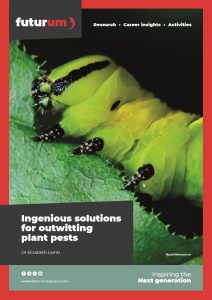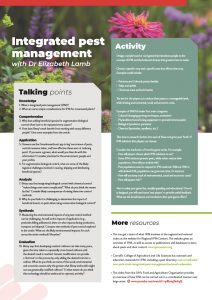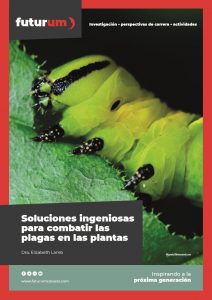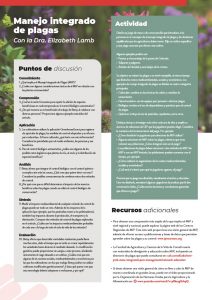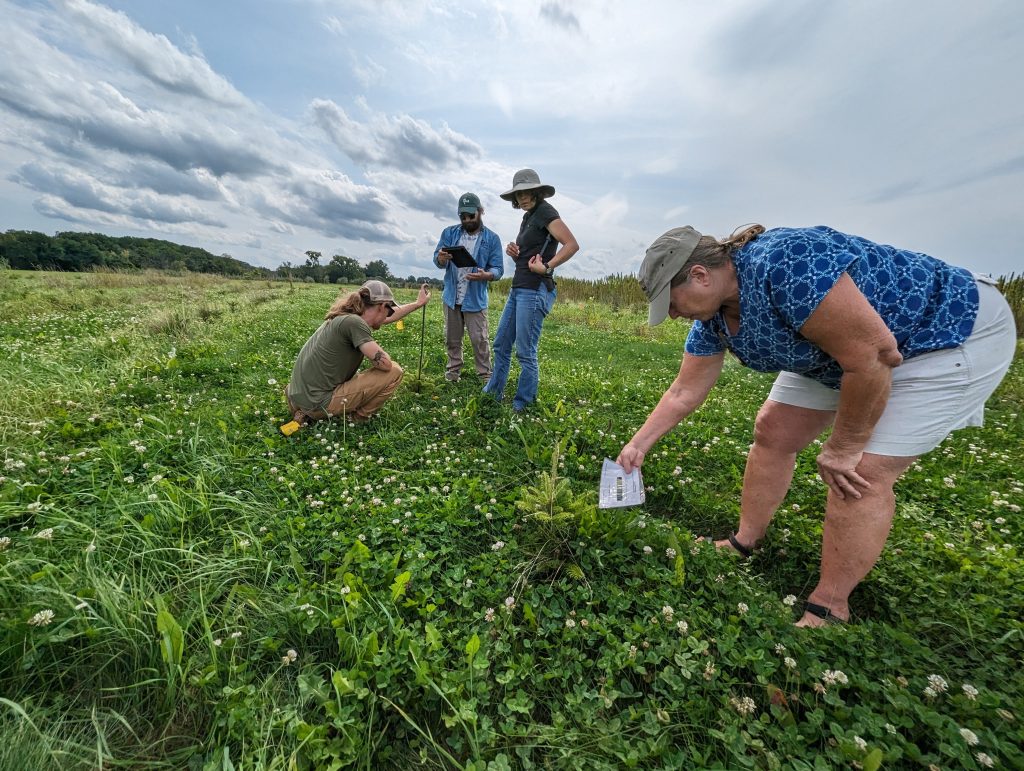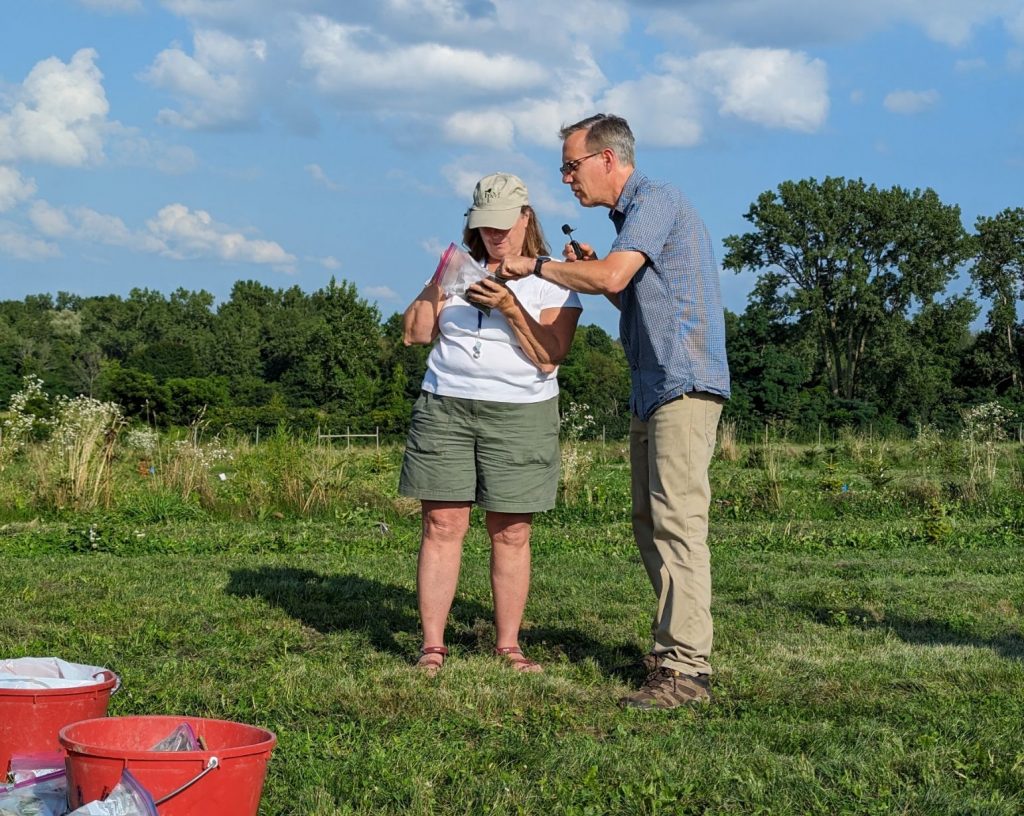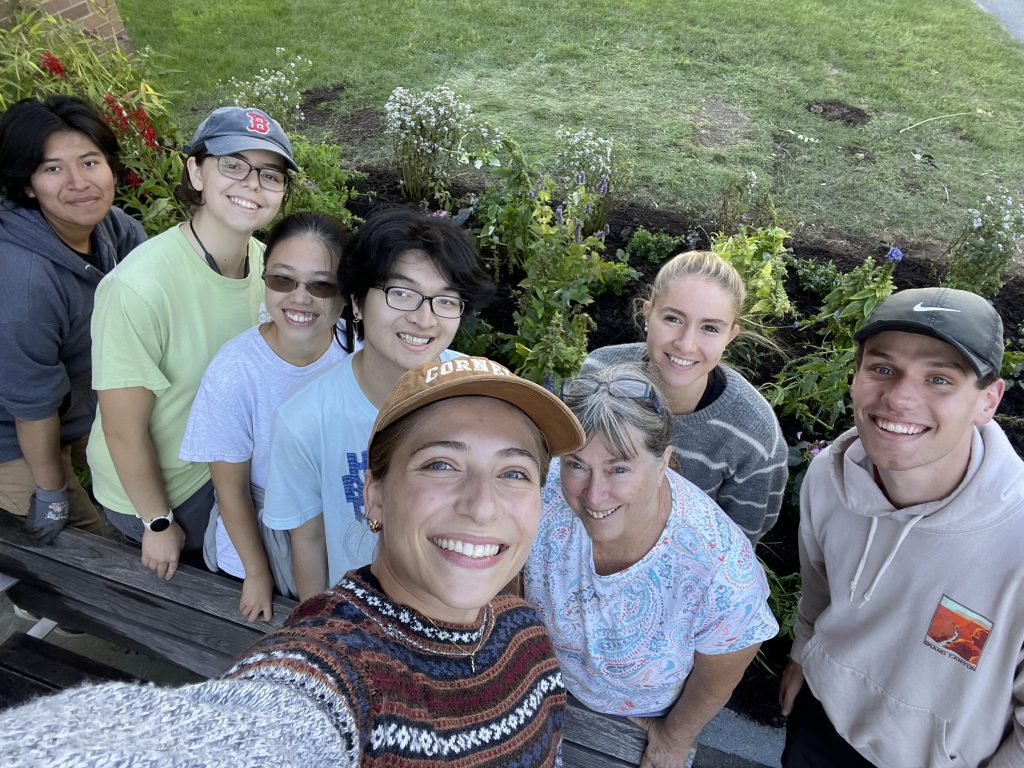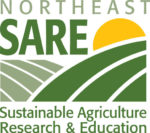Ingenious solutions for outwitting plant pests
Pests and pathogens can be the bane of plant producers’ lives. Fortunately, there are a range of inventive remedies out there. Dr Elizabeth Lamb, from Cornell University in the US, works closely with growers to find optimal pest control solutions depending on their specific situation, making the most of biological methods such as natural predators.
Talk like a plant scientist
Agriculture — the science or practice of farming
Agronomy — the science of crop production and soil management
Arthropods — a large group of invertebrate animals, including insects, spiders and mites
Biological control — the control of a pest through the use of other species, such as predators
Cultivar (‘cultivated variety’) — a variety of a plant produced through selective breeding
Entomology — the study of insects
Horticulture — the science or practice of growing garden plants, including vegetables, fruits and ornamental plants
Integrated pest management (IPM) — an approach used to control pests while minimising risks to people and the environment, by combining a variety of different types of management
Intervention — in IPM, methods that manage existing pest populations
Parasitoid — an insect whose larvae live as parasites on or in other insects that eventually kill their hosts
Pathogen — an organism that can cause disease
Pathology — the study of diseases, especially their causes and effects
Predator — an organism that feeds directly on another organism
Prevention — in IPM, methods that prevent pest populations from establishing
Pests can be a big problem for plant producers, but simply using chemical pesticides is not the optimal solution.
This is not just for environmental reasons, but also in terms of effectiveness, cost and quality. Dr Elizabeth (Betsy) Lamb is an expert in integrated pest management (IPM), a field which involves examining the full spectrum of pest prevention and control methods, and working out which is most suitable for particular scenarios.
“When we survey crop growers on the biggest limitations to their crop yields and quality, pest management is always near the top – along with weather, labour and energy costs,” says Betsy. “Pest management is a balancing act. Like Goldilocks, we want to get it ‘just right’.” Too little pest control can lead to severe impacts on yields and quality, but too much can be costly. This balance depends on individual scenarios, which often change every year. This demonstrates the importance of methods for deciphering which management techniques to use in any particular scenario.
IPM
“The fundamental basis of IPM is to find pest management methods that have the lowest environmental impact, while still controlling the pest,” explains Betsy. “It involves combining cultural, physical, biological and chemical tools.” Cultural methods involve making the plant’s environment less suitable for pests (for example, by adjusting planting and irrigation methods) and, typically, have the least negative environmental impact. Chemical interventions such as pesticides, meanwhile, typically have the most impact on other organisms in the environment. “IPM begins with those methods that have the least negative impact, moving to more environmentally harmful methods only when it’s necessary,” says Betsy.
Betsy works mostly with ornamental crops – from flowers and garden shrubs to Christmas trees. Compared to food crops, ornamentals have some unique challenges when it comes to IPM. “Ornamentals have aesthetic value, relating to how pleasing their appearance is, which means that even if only a very small number of leaves have disease or insect damage, the quality is reduced dramatically,” Betsy says. “We also grow a lot of different species and cultivars of ornamental crops – think of all the different types of flowers you might see in a garden. Each type of plant may have different pest management needs.”
‘Fighting fire with fire’
Biological methods of pest control often involve using other living organisms to combat pests. For instance, ladybirds are voracious predators of aphids, which can be a problematic plant pest. “Most of my work with biological control involves using arthropods to control other arthropods,” says Betsy. “There are two types of biological control: conservation and augmentative.”
Conservation biological control involves encouraging those species that occur naturally, for example, by growing crop-adjacent plots with plants that beneficial insects prefer for food or shelter. “We have what we call ‘beneficial habitat’ plots in a Christmas tree research field and urban vegetable farms in New York City to encourage the beneficial insects,” says Betsy. “While we have a lot of information from this research on which insects are good, bad or ‘just hanging out’, it’s much harder to determine to what degree the beneficial insects are keeping pest populations in check. But we do see evidence that biological control is going on there.”
Augmentative biological control involves directly adding commercially-produced beneficial species, usually pest predators and parasitoids. This type of control is more often used in greenhouses, as it is difficult for naturally occurring beneficial species to get into an enclosed greenhouse, and, once introduced, they tend to stay in place. “This process can be logistically challenging,” says Betsy. “Beneficial species have to be grown and collected, shipped and distributed through the greenhouse, and remain alive and healthy throughout.” This process may also have to be repeated regularly. “While we would like populations to establish themselves and reproduce in the greenhouse, typically they are so good at eating pests that they run out of food,” says Betsy. “Sometimes, the environment isn’t right for them to mate and produce young. And we might integrate biological control with chemical control, which makes things even more complicated!”
Viva la resistance!
Adding in other species is not the only biology-based method of pest management. Another way to fight off pests is to breed plant varieties that are innately resistant to pests. “Disease resistance is more common than insect resistance in ornamentals,” says Betsy. “I wish we had more resistant cultivars, but it usually takes many years to develop a variety that’s resistant and also has all the other characteristics that consumers want.”
For instance, basil is grown commercially for consumers to transplant into their home gardens, but it can be very susceptible to a disease called downy mildew. “Researchers found a wild basil species with mildew-resistant genes, and crossed it with commercial basil,” says Betsy. “Then, further selection had to be done until the cultivar also had all the other properties needed – namely, the taste and smell that consumers expect.” The end result was worthwhile, as basil can now be grown without needing to use chemical fungicides for downy mildew.
Scouting for bugs
Betsy works extensively with plant producers to help them find solutions for pest problems and to learn about what methods they find most effective. “When we started working with greenhouse growers to implement biological control, it became clear that it involves processing a lot of information,” she says. “We first hit on the idea to make a workbook to contain this information, but then decided to create an app, as most growers have smartphones with them every day.” Betsy’s team worked with a local app development company to create GreenhouseScout. “It was an interesting process to learn one another’s vocabulary – my ‘bug’ is not the same as their ‘bug’, for instance,” she explains. “They helped us realise the app’s potential, from how to best display information to interactive elements.”
Reference
https://doi.org/10.33424/FUTURUM449
Betsy evaluating the colour of Christmas tree seedlings in a research plot
(© Jody Benedict, NYS IPM)
(© Jody Benedict, NYS IPM)
The GreenhouseScout app provides growers with information on pest life history and ecology, how to pair biological control methods with specific pests, and what to expect if these controls are then combined with chemical methods. “The other main function of the app is interactive scouting,” says Betsy. “This involves growers logging occurrence of pests, control measures taken, and how effective these were at reducing pests. The app will create graphs from this information, which can be used to fine-tune methods for the next season.”
The next version of GreenhouseScout is in the works, including feedback from growers using the existing one. “We are adding the ability to include maps of a grower’s greenhouse or farm, and to upload photos of pests for help with identification,” says Betsy. “We’re also adding lots of new information and making the whole experience more user-friendly.” To supplement this development, Betsy is working on a training programme to help greenhouse workers and students learn how to scout for pests and diseases, and judge the efficacy of control methods. As the term integrated pest management conveys, Betsy’s work in IPM continues to involve many different approaches.
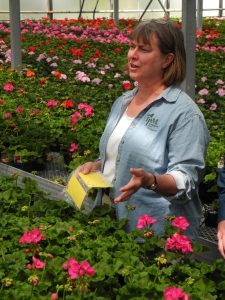 Dr Elizabeth (Betsy) Lamb
Dr Elizabeth (Betsy) Lamb
Senior Extension Associate, Ornamentals IPM Coordinator, NYS Integrated Pest Management Adjunct Assistant Professor, School of Integrative Plant Science Horticulture Section, College of Agriculture and Life Sciences, Cornell University, USA
Fields of research: Horticulture, plant pathology, entomology
Research project: Integrated pest management of ornamental crops, including biological control methods and close stakeholder collaboration
Funders: New York State, US federal government, Northeast Sustainable Agriculture Research and Education (NE-SARE), US Department of Agriculture National Institute of Food and Agriculture- Agriculture and Food Research Initiative (USDA NIFA AFRI), USDA NIFA Crop Protection and Pest Management (USDA NIFA CPPM), Cornell University
About plant science and integrated pest management
Plant science involves understanding how plants function and how they are affected by different conditions, making it a very broad field. Much of the discipline is applicable to the agriculture and horticulture industries. Betsy works specifically on integrated pest management (IPM), which involves understanding the many interactions between plants, pests, the environment, and prevention and intervention measures.
“One of the best parts of my job is that I work with everyone! This includes greenhouse and nursery growers, Christmas tree producers and cut flower farmers, to find out what issues affect them and how pest management can fit into their schedules and finance systems. I work with other research and extension professionals, both at Cornell University and further afield, to learn from their knowledge and experience. I also work with government officials and policymakers, as their decisions can affect growers too.
“On a given day, I might be answering grower questions on a specific issue or going to visit their farms. I have responsibility for helping all ornamental growers across New York State, which is a big area! I can’t visit them all, of course, but what helps one grower often helps another. I do a lot of outreach and extension, and sometimes speak at events. I also do research — right now, on how to avoid root diseases and weed competition in young Christmas trees.
“Often, it’s a steep learning curve, but I enjoy this aspect. At the moment, I’m learning about cut flowers, as production has increased in the state and growers need help with pest management. It’s exciting when I know an answer straight away, but more often I have to say: “I don’t know, but I will find out!”
“When we look to the future, the sky’s the limit. Technology is already well-integrated within plant science, but there is more to do, such as using sensors to measure plant or pest properties and drones to manage and survey plots. The integration of pest management with addressing climate change is a huge and growing area. There is also space to create new genetic tools to develop pest-resistant plant varieties.”
Pathway from school to integrated pest management
• Betsy recommends gaining a solid basis in biology and chemistry, in particular to understand the scientific method.
• Betsy notes that IPM is often integrated into other disciplines at university. It could be approached through subjects or modules in entomology, plant pathology, weed science and wildlife sciences, all of which teach aspects of management of these pests. Subjects such as horticulture and agronomy will cover the growing-specific aspects. Betsy also suggests learning about policy, law and community action because IPM solutions often involve people across diverse areas.
Explore careers in plant science and integrated pest management
• New York Agriculture in the Classroom brings agricultural education into schools, helping students and wider communities learn about and engage with food systems. Find out more about their diverse programmes and resources.
• The CALS Cornell Cooperative Extension Internship Program gives undergraduate students opportunities to gain practical experience within agriculture and life sciences. Betsy works on the ‘Conservation Biocontrol on Urban Farms in NYC’ internship.
• IPM is often integrated into other disciplines. There are scientific societies for all branches in the US, including the American Society of Horticultural Science, the Entomological Society of America, and the American Phytopthological Society. Betsy says, “All have regional meetings and love to have students participate. I also recommend looking into nearby research institutes or universities, finding people working on IPM and asking if they have internship, mentoring or shadowing opportunities. Most scientists are excited to see young people interested in their work.”
• According to Salary.com, the average base salary for a plant scientist in the US is around $73,000.
Meet Betsy
My mother was a botanist and my father was a plant breeder, and both loved their professions. That undoubtedly inspired my interest, which was further kindled by good science teachers at school and support from my family to pursue whatever I wanted. Also, growing plants is a creative process as well as a scientific one, and that combination of skills attracted me.
When I was very young, I wanted to be a farmer. In some ways I still do, but my work in research and extension at least involves talking to a lot of farmers. Seeing them apply information and balance all the factors that go in to producing a beautiful, productive crop is awe-inspiring.
In my first faculty position, I was surprised to find I was pretty good at teaching other people. I’ve grown to learn that communicating our research is just as important as the research itself, which draws me towards applied projects. I also love working in teams, which is really the only way that science ever has success.
I’m nosy, which helps me be observant in my work! I like puzzles and discovering how things work, and I’m interested in people and finding out about them. My career hasn’t been typical as it’s involved jumping between places and topics, but I like that too. Being on a steep learning curve is always an exciting place to be.
My proudest moments come from when I see my work applied in real life. When I find an answer to a problem and then growers implement it, it’s very satisfying. The same satisfaction comes from teaching, when you find that people were listening and then applied what they learnt. They may seem like small moments, but the world is made up of small moments, and we all stand on each other’s shoulders.
Betsy’s top tips
1. Be inquisitive and follow your curiosity. Don’t worry if your path doesn’t seem direct – as long as it’s yours.
2. Be broad in your career thinking. While there may be thousands of science students, only a few may combine it with their other passions, such as photography, art or anything else. What sets you apart might be what makes you essential.
3. Find good mentors and role models. Ask all the questions – silly ones, profound ones, off-the-wall ones – and learn to ask for help.
Do you have a question for Betsy?
Write it in the comments box below and Betsy will get back to you. (Remember, researchers are very busy people, so you may have to wait a few days.)

